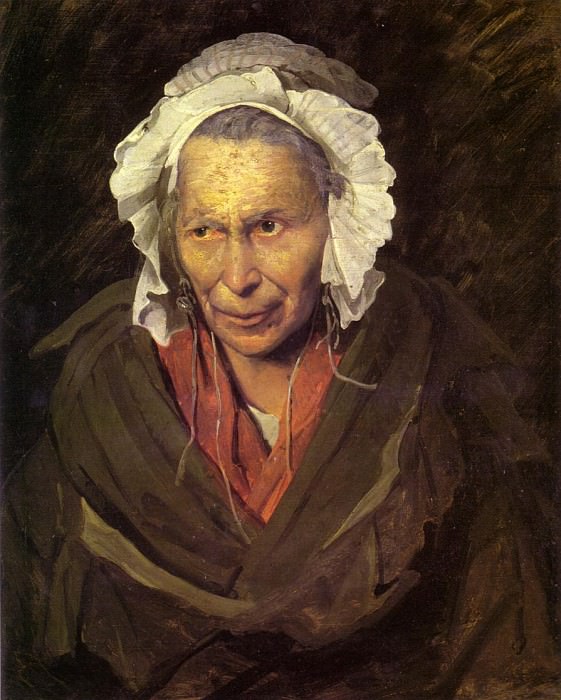gericault envy Jean Louis Andre Theodore Gericault (1791-1824)
Jean Louis Andre Theodore Gericault – gericault envy
Edit attribution
Download full size: 895×1117 px (0,1 Mb)
Painter: Jean Louis Andre Theodore Gericault
For centuries, the theme of the deprivation of sanity has attracted many artists. The painting, depicting a mad woman, was painted by Theodore Géricault in 1822. Consumed with a premonition of his imminent death, Géricault embodies his experiences on this canvas. Severe mental illness or loss of sanity is like death for a person, in the spiritual sense. The painting depicts a woman who has long been befallen by this fate.
Description of Theodore Géricault’s painting "Portrait of a Madwoman" (The Mentalist)
For centuries, the theme of the deprivation of sanity has attracted many artists. The painting, depicting a mad woman, was painted by Theodore Géricault in 1822. Consumed with a premonition of his imminent death, Géricault embodies his experiences on this canvas.
Severe mental illness or loss of sanity is like death for a person, in the spiritual sense. The painting depicts a woman who has long been befallen by this fate. Her thoughts wander far from earth, unknown to a healthy person. Her mind no longer perceives the line between reality and illusion.
The woman’s appearance reminds the viewer of her illness. Her hospital gown indicates that the heroine is in a closed institution for the insane. Streams of graying hair are sticking out from under a white cap, and her face is riddled with deep lines of wrinkles. Her skin, tinged with an unhealthy yellowing, hugs her delineated cheekbones and high forehead. Her gaze is devoid of expression and life, though her slightly swollen eyes gleam feverishly. The semblance of a smile can be seen on her lips. Perhaps now an unhealthy mind is playing evil games with her.
Theodore Géricault had previously created paintings in the romantic style, but what prompted him to create a canvas of this type? He put his own fear of losing his mind into the image of the unhappy mad woman. This explains his sense of compassion for the heroine, for her rebellious troubled state of mind, and Géricault’s desire to convey to the viewer the fine line that separates the healthy person from the mentally ill.
At the request of his friend, the doctor of the psychological clinic, Géricault created a series of portraits of insane people. The main idea of these paintings was to express not the external manifestations of progressive mental illnesses, but the inner experiences of sick people.
Кому понравилось
Пожалуйста, подождите
На эту операцию может потребоваться несколько секунд.
Информация появится в новом окне,
если открытие новых окон не запрещено в настройках вашего браузера.
You need to login
Для работы с коллекциями – пожалуйста, войдите в аккаунт (open in new window).




















You cannot comment Why?
The woman’s expression is complex; theres an ambiguity in her gaze that resists easy interpretation. It isnt overtly sorrowful or joyful, but rather holds a quiet intensity, perhaps tinged with resignation or shrewd observation. The artist has rendered the eyes with particular attention to detail, suggesting a depth of character and intelligence.
Her attire consists of a dark green shawl draped over her shoulders, revealing a glimpse of a red garment beneath. This color contrast draws the eye towards the center of the image and provides a visual warmth against the otherwise somber palette. The simple clothing suggests a life lived outside of privilege or luxury.
The brushwork is loose and expressive, contributing to a sense of immediacy and realism. Theres an absence of idealization; the artist has not attempted to soften the effects of age but instead presents her with unflinching honesty. This approach moves beyond mere representation towards a study of character and the realities of human existence.
Subtly, the painting seems to explore themes of aging, resilience, and perhaps even social marginalization. The woman’s direct gaze challenges the viewer, inviting contemplation on the lives of those often overlooked or forgotten by society. Theres an underlying dignity in her portrayal that transcends any potential pity or sentimentality.